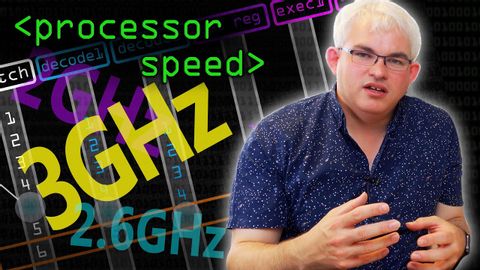コンピュータの速度 - コンピュータマニア (Computer Speeds - Computerphile)
林宜悉 が 2021 年 01 月 14 日 に投稿  この条件に一致する単語はありません
この条件に一致する単語はありませんUS /ˈriəˌlaɪz/
・
UK /'ri:əlaɪz/
US /ˈstrʌk.tʃɚ/
・
UK /ˈstrʌk.tʃə/
- n. (c./u.)構造;建物
- v.t.組み立てる;組織する
US /ædˈvæntɪdʒ/
・
UK /əd'vɑ:ntɪdʒ/
- n. (c./u.)有利な点;強み : 長所;利益
- v.t.利用する
US /dɪˈskraɪb/
・
UK /dɪ'skraɪb/
エネルギーを使用
すべての単語を解除
発音・解説・フィルター機能を解除

